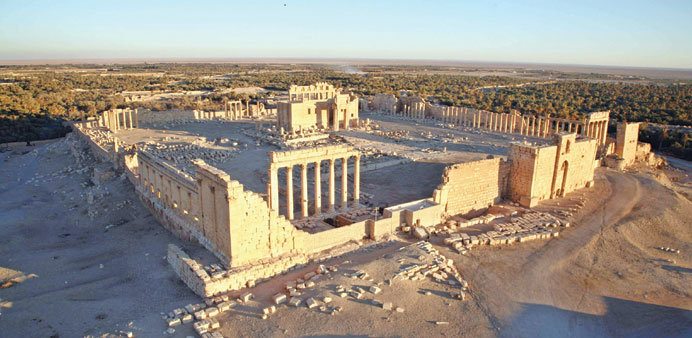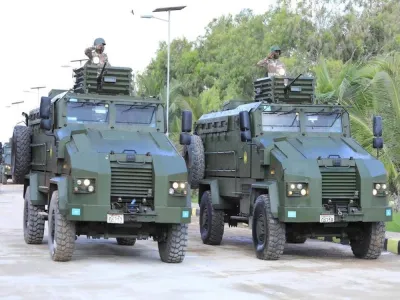An aerial view taken on January 13, 2009 shows a part of the ancient city of Palmyra. Islamic State group militants seized Syria’s Palmyra yesterday, as Unesco warned that the destruction of the ancient city would be “an enormous loss to humanity”.
AFP/Damascus
The Islamic State group seized Syria’s Palmyra yesterday, as Unesco warned that the destruction of the ancient city would be “an enormous loss to humanity”.
The capture of the 2,000-year-old metropolis reportedly leaves more than half of Syria under IS control and comes days after it expanded its control in Iraq.
US President Barack Obama played down the developments, saying he didn’t think the US was “losing” to IS.
Unesco chief Irina Bokova called Palmyra “the birthplace of human civilisation. It belongs to the whole of humanity and I think everyone today should be worried about what is happening.”
French President Francois Hollande said the world must “act” both to save Palmyra and against IS.
In a new move consolidating their grip in Syria, IS seized yesterday Al-Tanaf, the last regime-held crossing on the border with Iraq, the Syrian Observatory for Human Rights said.
The monitor said IS control of Al-Tanaf, known as Al-Walid by Iraqis, means Syrian government forces have lost control over the porous border.
The Observatory said militants spread out yesterday through Palmyra, including at the archaeological site in the city’s southwest, and executed 17 people accused of “working with the regime”.
Syrian state media said loyalist troops withdrew after “a large number of IS terrorists entered the city” at the crossroads of key highways leading west to Damascus and Homs, and east to Iraq.
IS proclaimed Palmyra’s capture online and posted video and several pictures, including of a hospital and a prison and a military airbase but none of the ancient site.
The militants, notorious for demolishing archaeological treasures since declaring a “caliphate” last year straddling Iraq and Syria, fought their way into Palmyra on foot.
Known in Syria as “the pearl of the desert”, Palmyra is home to colonnaded alleys, elaborately decorated tombs and ancient Greco-Roman ruins.
IS sparked international outrage this year when it blew up the ancient Assyrian city of Nimrud and smashed artefacts in the Mosul museum, both in Iraq.
Syria’s antiquities director Mamoun Abdulkarim now fears a similar fate awaits Palmyra, and urged the world to “mobilise” to save it.
“IS now dominates central Syria, a crossroads of primary importance,” said Fabrice Balanche, a French expert on Syria.
“Taking Palmyra opens the way to Damascus and Homs. Eventually, this axis can be threatened.”
IS has recently threatened a number of regime strongholds, including Deir Ezzor city in the east and military airports in the north and south.
“The capture of Palmyra leaves IS strongly placed to make more territorial gains from (Syrian President Bashar al-) Assad, at a time when the government is heavily occupied in the north and south,” said Matthew Henman, head of IHS Jane’s Terrorism and Insurgency Centre.
IS now controls “more than 95,000sq km (38,000sq miles) in Syria, which is 50% of the country’s territory”, the Observatory said.
Palmyra’s takeover came days after IS seized the Iraqi city of Ramadi, their most significant victory since mid-2014 when they conquered swathes of land, sparking a US-led air campaign to support Baghdad.
Yesterday IS pushed further and seized Iraqi positions east of Ramadi, officials said.
Obama described the loss of Iraqi territory as a tactical setback and blamed it on a lack of training and reinforcements of Iraq’s own security forces.


